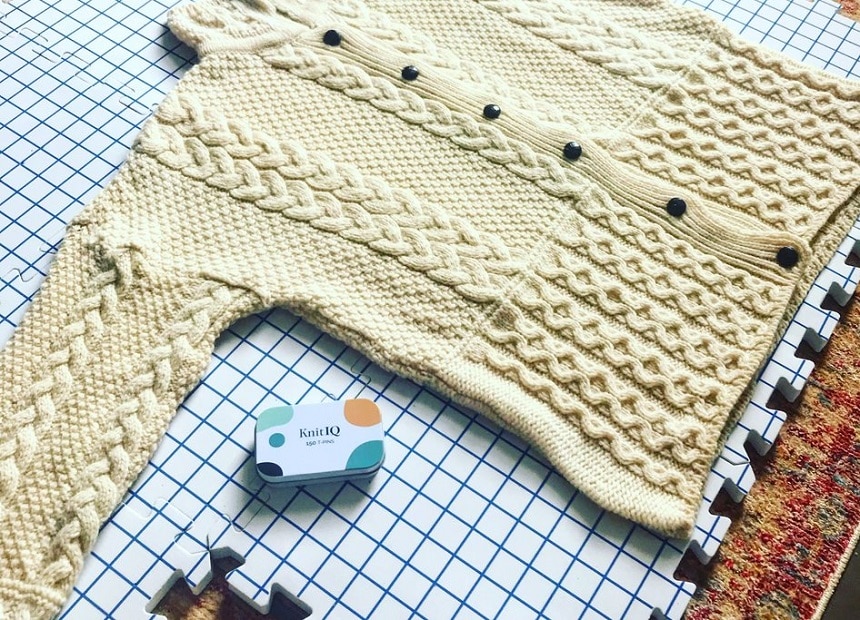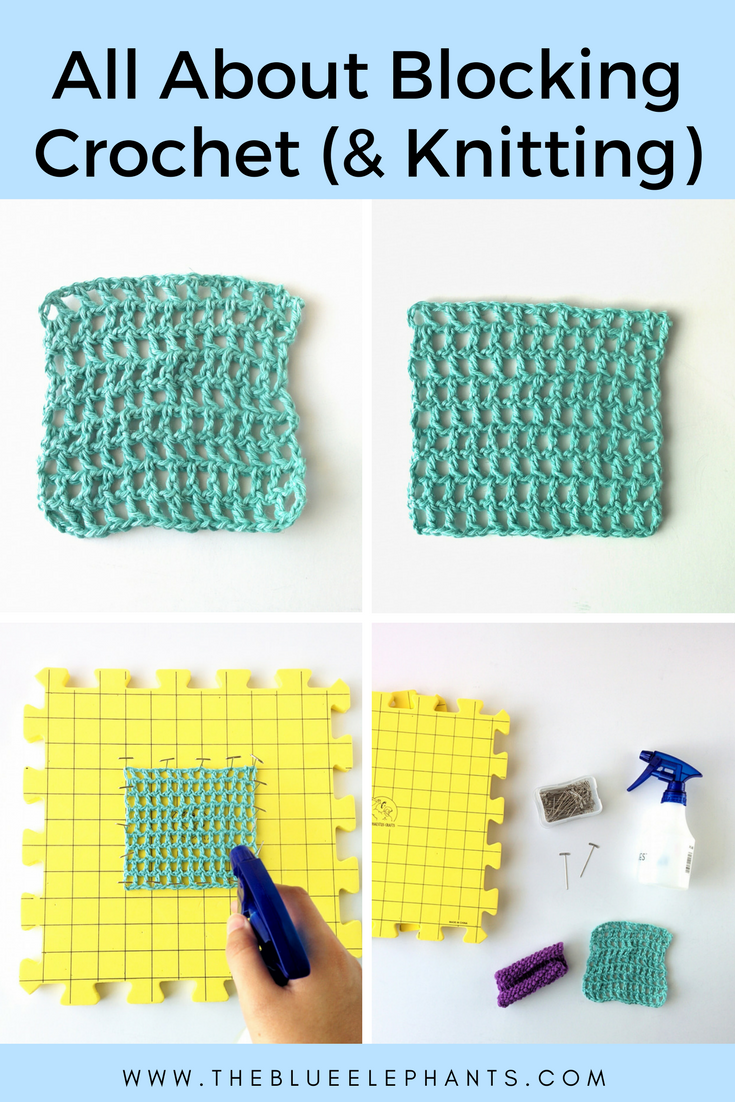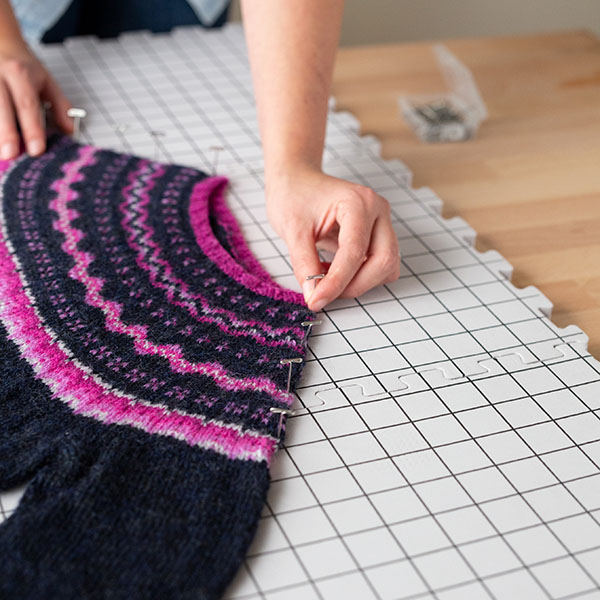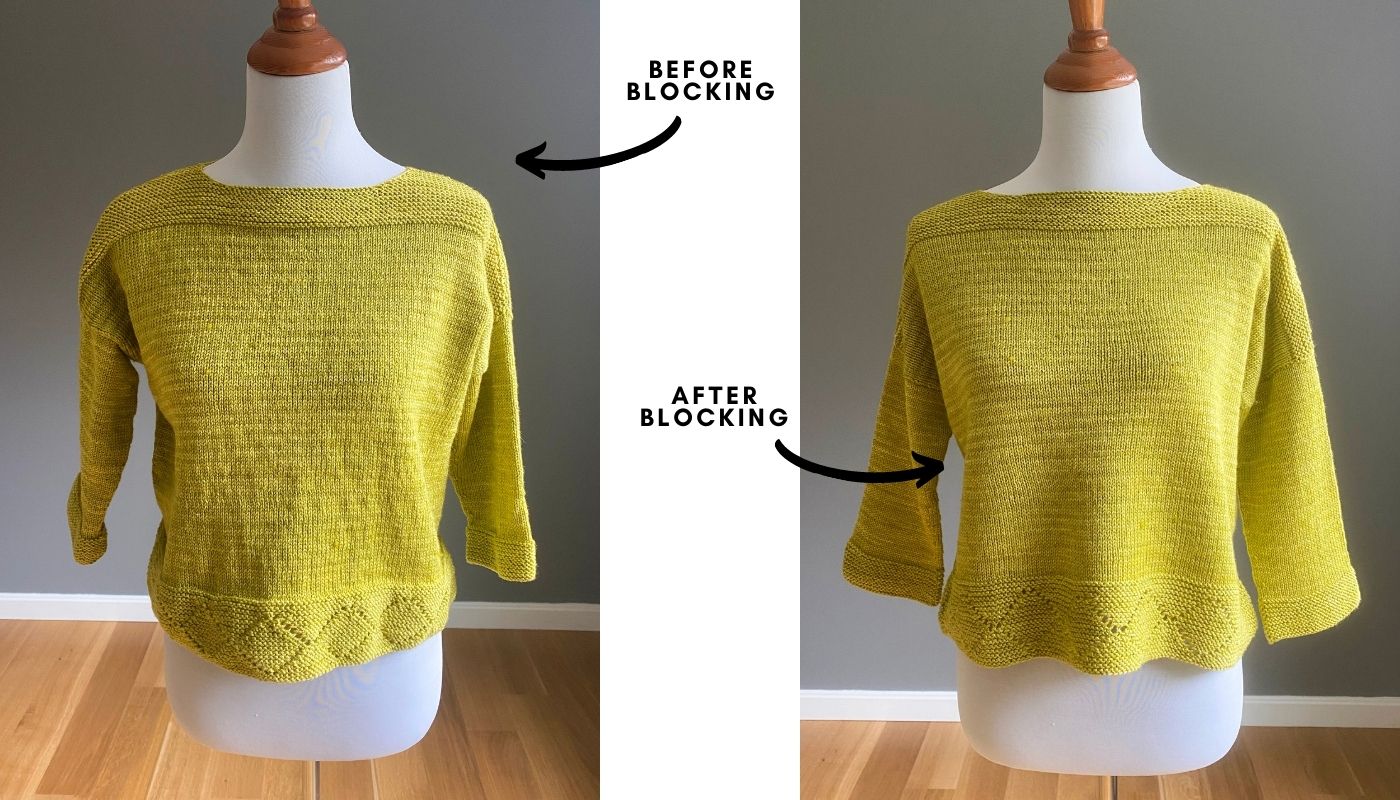What Is Blocking Knitting
What Is Blocking Knitting - Web blocking knits is a way of forming your project into a more perfect shape. This means that you stretch and shape your finished piece so that it has the correct measurements your pattern has given you. Web how to block knitting in 7 steps: Doing so may distort the stitches beyond correction. You only have to keep some simple little details in mind. Experiment with blocking your gauge swatch before you block an actual knitted piece. All in all, it’s a pretty simple and straightforward process any beginner will easily be able to implement. By dampening and then gently stretching the knitted fabric, you can achieve a polished and uniform appearance. There are several techniques you can use to block knitwear, including wet, dry, steam, and damp blocking. It is a simple matter of washing or wetting your newly knitted item and letting it dry flat in the shape you wish it to have. All in all, it’s a pretty simple and straightforward process any beginner will easily be able to implement. Web blocking is shaping and sizing a finished knit project by manipulating its fibers. It helps to have a flat surface to lay your garment on, and one that will absorb the wetness as well as withstand sticking pins into. Before blocking. The blocking process will help secure the ends in place. Web do you block your knitting? Web blocking refers to the process of stretching and shaping a finished piece to ensure it is the proper size and shape. Web what is blocking knitting? What is blocking in knitting? In knitting, the blocking process is wetting/soaking or steaming your finished garments. It evens out the stitches and the edges and gives your piece that finished look. Blocking in knitting is a crucial last step in every single project. Web blocking your knitting is a simple yet essential technique. It can also help to make your stitches look more even,. It evens out the stitches and the edges and gives your piece that finished look. After being in your hands, in your knitting bag, and all over your house, your garment probably needs a little cleaning. It can make something that was handmade by an amateur look like it was crafted by a professional. Check out the following to learn. Web blocking is an essential but often overlooked step in knitting. See how the stitch definition really pops! Blocking reshapes an item and redistributes the stitches so that they sit evenly. Blocking involves the stretching and shaping of a finished knit to get the dimension suggested in its patterns accurately. It is a simple matter of washing or wetting your. Web blocking knits is a way of forming your project into a more perfect shape. It involves shaping and setting the final size and form of your finished knitted piece. There are 2 main blocking methods: Web what is blocking knitting? The same swatch before and after blocking. There are several techniques you can use to block knitwear, including wet, dry, steam, and damp blocking. Web what is blocking? No matter what method you use, the blocking process will stretch and smooth your stitching. You only have to keep some simple little details in mind. Blocking reshapes an item and redistributes the stitches so that they sit evenly. Web what is blocking? This means that you stretch and shape your finished piece so that it has the correct measurements your pattern has given you. All in all, it’s a pretty simple and straightforward process any beginner will easily be able to implement. Blocking reshapes an item and redistributes the stitches so that they sit evenly. You could use. Some people never block their knitting, and some people swear by it. It is a simple matter of washing or wetting your newly knitted item and letting it dry flat in the shape you wish it to have. The process usually involves dampening the knit fabric by soaking, spraying, or directing steam at it. It can also help to make. We sell curated yarns, knitting kits,. Web in this knitting skills video, you'll learn what blocking a knitted item means and how to block your finished projects. Wet blocking and steam blocking. Should you block every project? Experiment with blocking your gauge swatch before you block an actual knitted piece. Web what is blocking? Think of blocking your knitting like trimming the edge of your lawn after mowing it. What is blocking in knitting? There are several techniques you can use to block knitwear, including wet, dry, steam, and damp blocking. Web blocking is an important final step for almost any knitting project. It is also performed to make 2 pieces that need to match the same size or make your stitches look better and more even. Web blocking is a concept that can be applied to almost all patterns. Some people never block their knitting, and some people swear by it. There are various ways to block a garment depending on the type of yarn used. The same swatch before and after blocking. Wet blocking is easier and safer as it mainly involves just washing and drying your project. In this video, i show you what yarns should be blocked an. After being in your hands, in your knitting bag, and all over your house, your garment probably needs a little cleaning. Blocking involves the stretching and shaping of a finished knit to get the dimension suggested in its patterns accurately. The blocking process will help secure the ends in place. Web blocking your knitting is a simple yet essential technique.
How to Block Knitting YouTube

Blocking Knitting The Detailed Guide for Beginners

All About Blocking Crochet & Knits

Tutorial Blocking Knits KnitPicks Staff Knitting Blog

Before and After (blocking) Elizabeth Smith Knits

How to Block 100 Acrylic Yarn The Best Way for Knit + Crochet YouTube

Blocking your knitting with KnitIQ Blocking Combs KnitIQ US
![How to block knitting [The ultimate tutorial]](https://nimble-needles.com/wp-content/uploads/2023/03/a-knitted-project-before-and-after-blocking.jpg)
How to block knitting [The ultimate tutorial]

How to Block Your Knitting Cocoknits

What Is Blocking In Knitting?
Web Blocking Is An Essential But Often Overlooked Step In Knitting.
This Means That You Stretch And Shape Your Finished Piece So That It Has The Correct Measurements Your Pattern Has Given You.
What Is Blocking In Knitting?
Before Blocking Knitting, Weave In All Loose Ends;
Related Post: